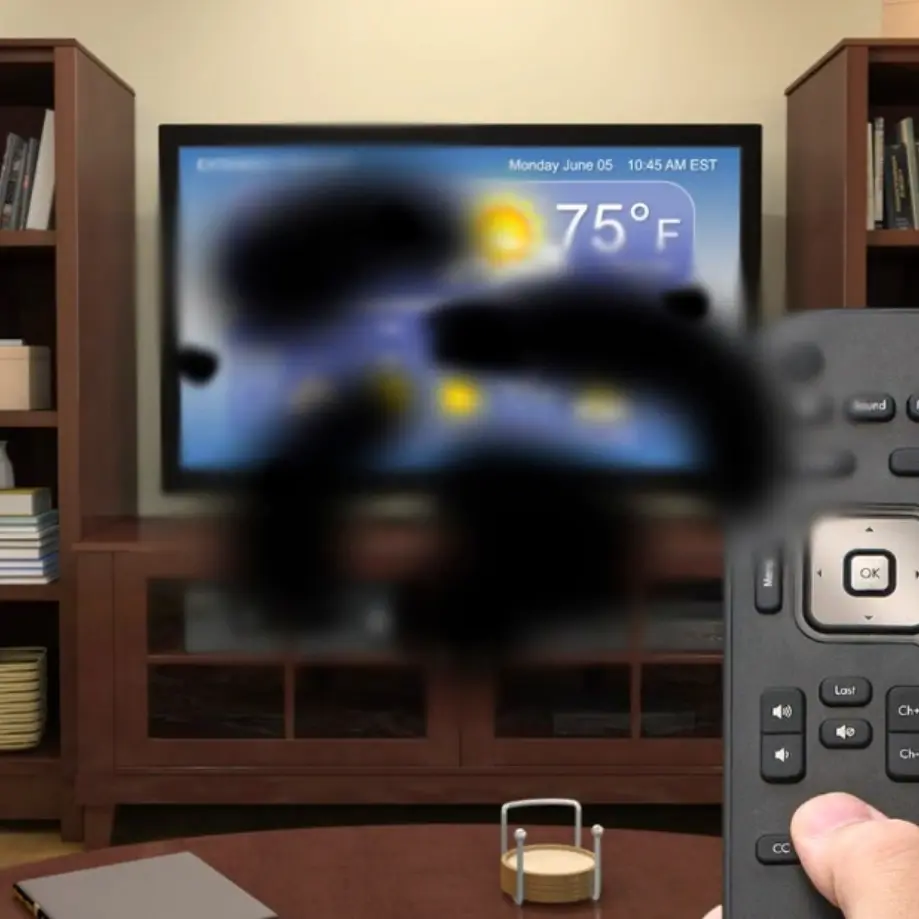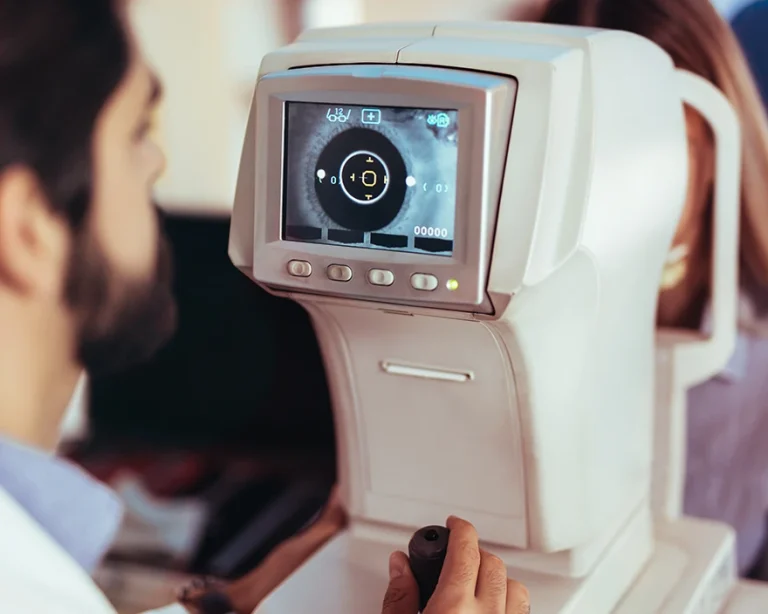
Comprehensive Eye Care
Regular eye examinations are important in maintaining eye health. During a comprehensive eye examination, eye diseases or other abnormalities that are not yet causing symptoms can be detected.
At Cincinnati Eye Institute, we provide comprehensive eye care to patients in Northern Kentucky and Cincinnati. This means that, in addition to annual eye exams, we are able to offer advanced diagnostic testing and treatment for a full range of eye conditions.

Benefits of an Annual Eye Exam
A comprehensive eye exam should be performed once every year. Older adults are at higher risk for eye conditions such as glaucoma, macular degeneration and cataracts. During a comprehensive eye examination, your doctor may detect simple refractive errors or any other eye problems or diseases.
Early intervention is crucial in preventing vision loss from many progressive eye conditions which may not cause symptoms until significant and irreversible damage has taken place. Early detection of eye problems gives a patient a choice of treatment options, and reduces the risk of permanent damage.
Common Eye Conditions That Can Be Treated at CEI
Our eye doctors treat a wide range of common eye conditions including the the following:
Amblyopia (lazy eye)
Amblyopia, or “lazy eye,” is a result of a processing error in the brain that causes the brain to favor one eye over the other. This may not present physical symptoms or misalignment of the eyes, but can result in decreased vision. Amblyopia may be treated with the use of an eye patch or corrective lenses. Amblyopia is most frequently diagnosed in children and it is imperative to treat amblyopia in childhood to prevent a permanent effect on the visual system.
Glaucoma
Glaucoma is often caused by increased pressure within the eye, which leads to damage to the optic nerve. Increased eye pressure may result from infection or inflammation, an injury to the eye, or reduced fluid outflow of the eye. The most common symptoms of glaucoma are dim or blurred vision, the gradual loss of peripheral vision, or tunnel vision. Symptoms may also include nausea, vomiting, sudden visual disturbance, halos around lights, blurred vision, headache, and red eyes. Glaucoma is a leading cause of blindness among adults and should be addressed promptly by an ophthalmologist with specialized training in treating this serious condition.
Blepharitis
Blepharitis is a chronic condition that affects the eyelids and eyelash follicles. Blepharitis can be uncomfortable and unsightly, resulting in eyes or eyelids that are red or swollen, frequent tearing, crusting, flakes or scales on the eyelids, blurred vision, light sensitivity, or a burning sensation in the eyes. Blepharitis can be managed and controlled with the assistance of an experienced ophthalmologist.
Chalazion & Styes
Chalazia and styes present similar symptoms and are often confused for one another, but these are distinct eye conditions with different treatments. A chalazion is a non-infectious bump on the eyelid (upper or lower) and can cause redness, tenderness, or swelling of the eyelid that results from blockage of a tiny oil gland. A stye also may appear as a bump or lump on the eyelid, but styes are caused by a bacterial infection. Styes and chalazia often resolve on their own, but some may require advanced treatment in the form of steroids, antibiotics, prescription eye drops, or even manual drainage by an ophthalmologist.
Learn More About Chalazion & Styes
Corneal Abrasion
A corneal abrasion is often caused by rubbing of the eyes, improper contact lens care, or the intrusion of sand or dust into the eye. This minor scratch or nick on the cornea’s surface can be painful and should be attended to by an experienced ophthalmologist. Corneal abrasions can be very painful because the cornea is exquisitely sensitive, but they typically resolve quickly with proper treatment.
Learn More About Corneal Abrasion
Eye Infections
Eye infections caused by exposure to bacteria, viruses, or fungi can cause pain, eye discharge, redness, itchiness, and vision problems. Styes, conjunctivitis, and corneal ulcers are among the most common eye infections the ophthalmologists at Cincinnati Eye Institute see. Some eye infections can be very painful and may also pose a threat to eye health or vision. Eye infections should be treated promptly by an ophthalmologist.
Learn More About Eye Infections
Iritis
Iritis is inflammation of the colored part of the eye, known as the iris. This can be uncomfortable and may also cause redness, visual disturbances like floaters or blurred vision, and sensitivity to light. Iritis can typically be treated with prescription eye drops.
The Comprehensive Eye Examination Process
Even in younger, healthy adults who are asymptomatic, a regular eye examination is essential. Serious medical conditions, such as high cholesterol, diabetes and high blood pressure can be detected, allowing patients to seek treatment early.
A comprehensive eye examination differs from a vision screening. The latter only tests visual acuity, and is commonly performed by a school nurse, optician, pediatrician or other healthcare provider.
In order to evaluate the eyes thoroughly and detect any problems, the following tests may be performed:
- Visual acuity
- Visual field
- Retinal examination under pupil dilation
- Slit-lamp examination
- Refraction
- Tonometry (tests intraocular pressure (IOP)
- Keratometry (measures the curvature of the cornea)
Common Refractive Errors
A comprehensive eye examination can identify common refractive errors that cause blurry vision. Refractive errors affect millions of people in the United States, and often get progressively worse as patients age. Refractive errors are easily treated.
- Myopia
- Hyperopia
- Astigmatism
- Presbyopia
Simple refractive errors can be effectively treated with either glasses or contact lenses. Corrective lenses may need to be used only during certain activities, such as reading, watching television or driving, or may be needed at all times.
The team at CEI also offers the most up-to-date vision correction surgery procedures. Thanks to procedures like LASIK, PRK and EVO ICL, you may be able to reduce or even eliminate your dependence on corrective lenses.

Advanced Testing & Diagnostics
In addition to all elements of a comprehensive annual eye exam, the specialists at Cincinnati Eye Institute are equipped to perform advanced diagnostic examinations, including but not limited to:
Convenient Locations in and Around Cincinnati
We Look Forward to Seeing You!

1945 CEI Drive
Blue Ash OH, 45242

9997 Carver Rd, Level 2
Cincinnati OH, 45242

2055 Hospital Dr Suite 255
Batavia OH, 45103

601 Ivy Gateway Suite 301
Cincinnati OH, 45245
Contact CEI for Comprehensive Eye Care
Comprehensive eye examinations are essential in checking for vision problems, eye diseases, refractive errors and overall health. How frequently the eyes should be examined is based on the patient’s age and specific circumstances. To learn more about the importance of regular eye examinations and the world-class comprehensive eye care offered by the specialists at CEI, please contact us to schedule an appointment in Northern Kentucky or Cincinnati.
The doctors at Cincinnati Eye Institute have either authored or reviewed the content on this site.






































